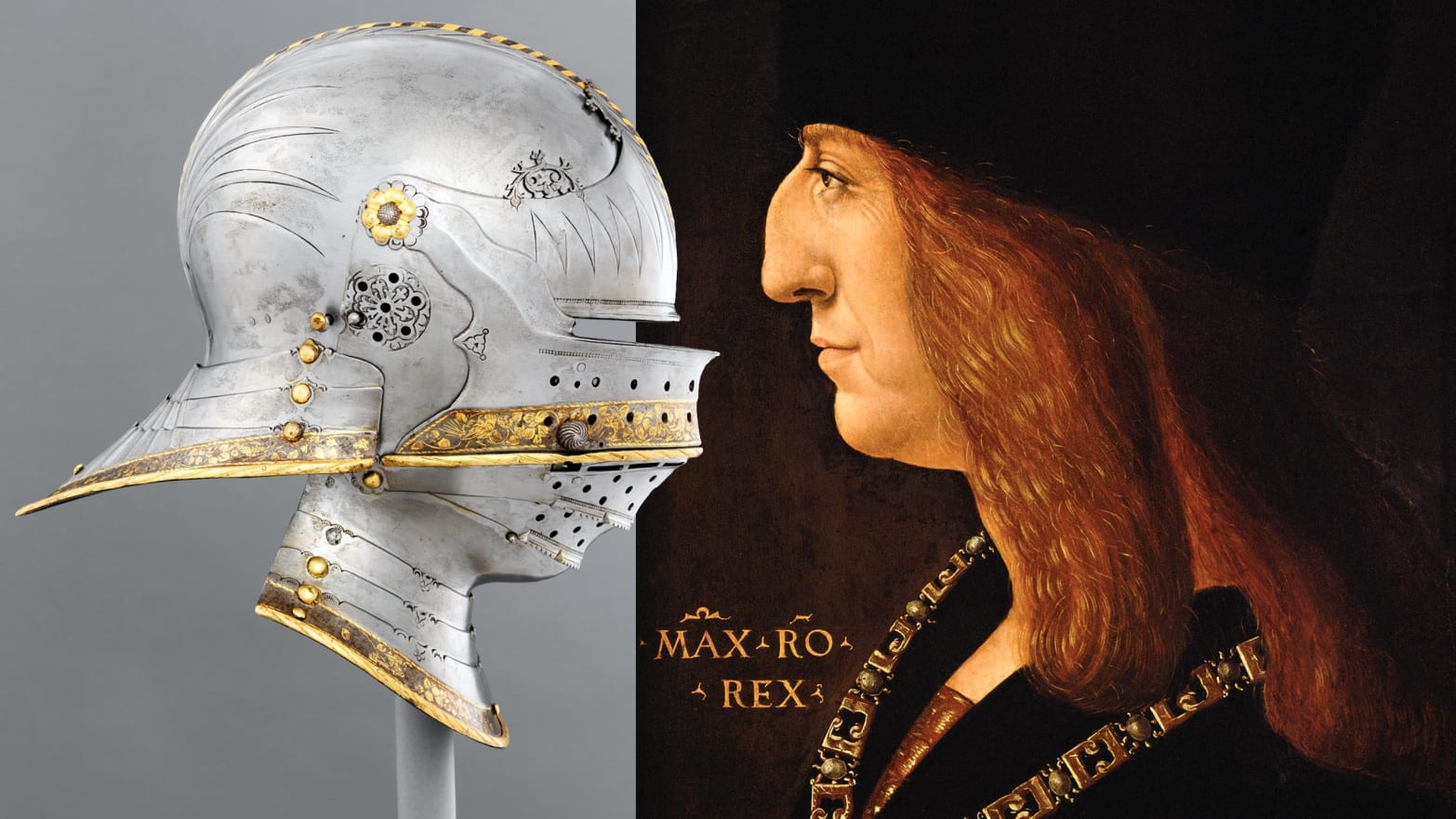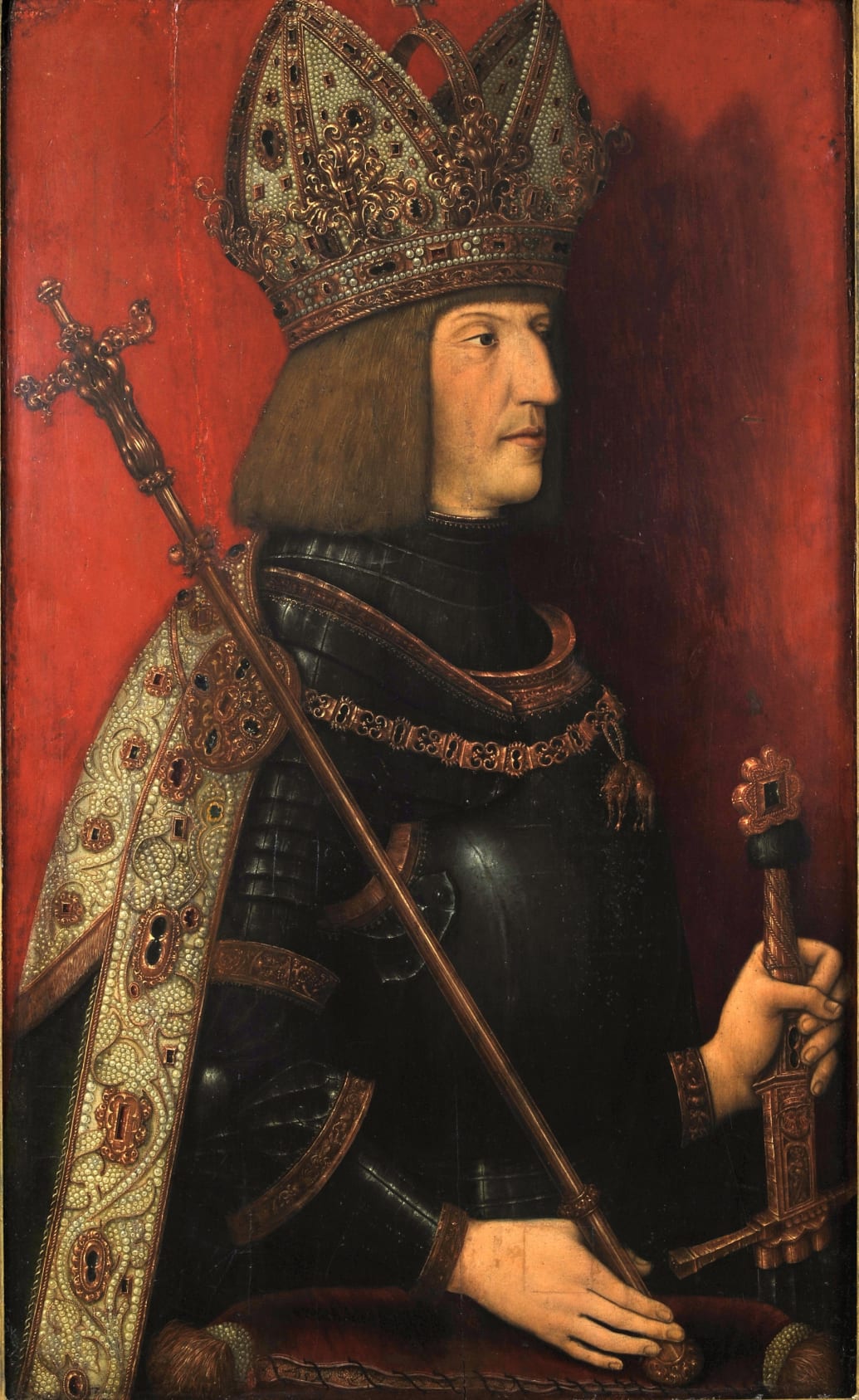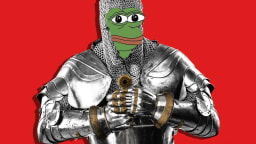
Courtesy The Metropolitan Museum of Art
Listen to article7 minutes
The Metropolitan Museum of Art titled its latest exhibition, which showcases armor commissioned by Holy Roman Emperor Maximilian I, “The Last Knight.” It’s a fitting name for a show displaying pieces made during the medieval era’s final gasps. But Maximilian’s story could easily be called “The First Influencer.”
This year marks the 500th anniversary of Maximilian’s death in 1519, but the power-hungry monarch’s story has piercing parallels to modern day leaders. Though he ascended into power through a strategic marriage to Duchess Mary of Burgundy, Maximilian solidified his control through relentless propaganda campaigns.
As the Renaissance loomed, the emperor cultivated a chivalrous, heroic image straight out of Camelot. His preferred power flex came in armor. Met curators, led by Pierre Terjanian, pulled together over 180 objects from around the world for this exhibit.
The first thing one sees upon entering the wing is a suit of armor made for one (poor) horse who had to carry it, and presumably a rider, into battle.
-
The Alt-Right Is Taking Over Renaissance Fairs
HISTORICALLY INACCURATE NAZIS
Kelly Weill
There are spiked gauntlets originally worn by Maximilian, which wouldn’t have looked out of place onstage with Lady Gaga during her “Born This Way” era. Visitors will also find an A-line skirt made out of armor, a breastplate with an extremely intimidating spike jutting out the heart, and a tiny child’s suit made for Maximilian’s son.
Terjanian told The Daily Beast that most of the armor has not been weighed, but he wagered the heaviest is “about 80 pounds.” The emperor owned so many weapons and suits of metal that he purchased an entire home just to fill it with his bounty.
“Maximilian wanted control over his image, and he wanted to be instantly recognizable,” Terjanian said. “He’s rarely portrayed as a modest man.”
Maximilian, who preferred to be portrayed in profile, oozes a commanding serenity in the portraits on display, including one from 1502 by Giovanni Ambrogio de Predis. The middle aged emperor looks downright steely, staring off purposefully. “He looks experienced, like an almost indestructible figure,” Terjanian said.

